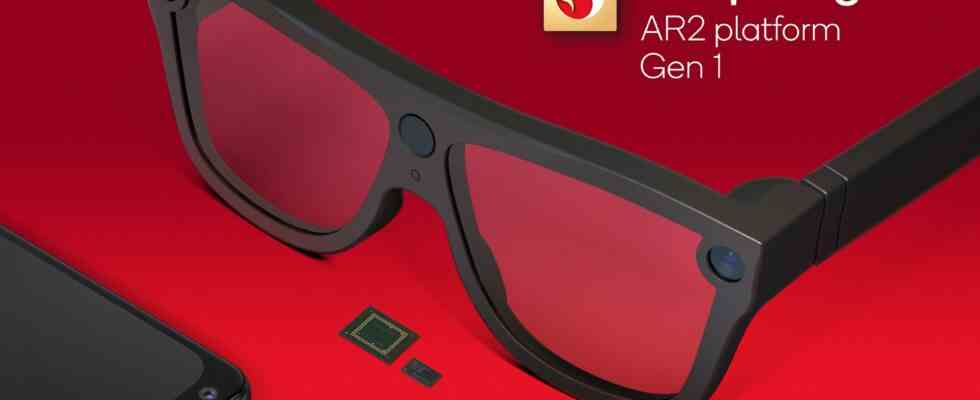On the second day of the in-house Snapdragon Summit, Qualcomm presented a platform for augmented reality glasses. Snapdragon AR2 Gen 1 enables thinner and lighter AR glasses and requires less power than the previous platform.
Qualcomm’s Snapdragon AR2 Gen 1 is part of the US company’s extended reality portfolio, but it was different from the previous XR platforms specific to AR glasses developed. However, the XR platforms for mixed reality products would like to be retained in the future. Since there is not as much space for technology in AR glasses as in VR glasses, a specific platform was necessary to reduce the chip size and energy requirements.
Snapdragon AR2 Gen 1 consists of a main processor measuring 12 × 10 millimeters and a small 6.2 × 4.2 millimeter co-processor. Among other things, the former is responsible for spatial perception and screen output, while the coprocessor is said to be responsible for summarizing sensor information and eye tracking. By moving from a single-chip to a Dual chip solution could Qualcomm die Downsize printed circuit board (PCB) by 40 percent and reduce the amount of cable required by 45 percent compared to the AR reference design based on the XR2 platform.
First AR solution with Wi-Fi 7 compatibility
Compared to XR2 platform, need Snapdragon AR2 up to 50 percent less electricity and perform up to 2.5x better on AI tasks like hand tracking and image recognition. Incidentally, the radio chip is also part of the new platform FastConnect 7800which is also featured in the freshly Snapdragon 8 Gen 2 is used. This makes Snapdragon AR2 Gen 1 the first AR solution already available for wifi 7 is prepared.
We engineered the Snapdragon AR2 to address the unique challenges of head-worn AR, delivering industry-leading processing power, artificial intelligence, and connectivity in a sleek form factor.
As the technical and physical requirements for VR/MR and AR diverge, Snapdragon AR2 represents another metaverse-defining platform in our XR portfolio, helping our OEM partners to revolutionize AR glasses.
Hugo Swart, Vice President of XR Product Management at Qualcomm
Whether the main processor as in the predecessors on a Snapdragon 8 mobile chip is currently unknown, but Qualcomm is letting it in as well Four-nanometer method to produce. The main processor has numerous units that can also be found in mobile chips, but a graphics unit is missing. Therefore still a host device (e.g. smartphone) needed, which provides image content such as games and videos via wired or wireless connection. Corresponding products based on the new platform have not yet been announced, but Microsoft has worked closely with Qualcomm in this regard.
Links marked with * are affiliate links. With the purchase via this link, we as the site operator receive a sales commission without you paying more. This is how you can support all-round PCs


